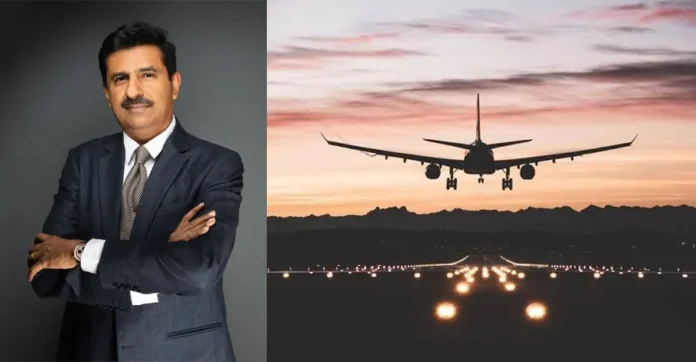
The group chairman of Sky One adds that the devastating incident underscores the need for continuous safety checks and follow-up actions
While investigating the ‘Miracle on the Hudson’ plane crash in 2009, it was revealed that the US aircraft flew directly into a flock of birds shortly after takeoff from New York’s LaGuardia Airport. This resulted in both engines losing power, but the plane had gained enough altitude to glide. The pilots were able to ditch the Airbus A320 in the Hudson River between Manhattan and New Jersey, with all on board surviving.
As for the AI-171 crash in Ahmedabad last week, which killed 242 passengers on board, the investigation team is trying to retrieve clues to establish the cause behind the tragedy. So far, a conclusive answer is yet to be derived. Industry experts say that irrespective of the findings, the devastating incident underscores the need for continuous safety checks and follow-up actions.
“Following the unfortunate tragedy in Ahmedabad, the Directorate General of Civil Aviation (DGCA) has taken precautionary steps. The DGCA has reportedly instructed Air India to carry out thorough maintenance procedures on its 787-8/9 aircraft fitted with GEnx engines, in coordination with regional DGCA offices,” informs Jaideep Mirchandani, Group Chairman of Sky One.
He also highlights the need for Clear crisis communication and stricter protocols across the board. “A one-time comprehensive inspection should be made mandatory for all aircraft before departure. Take-off parameters should be reviewed each time, not just periodically. Introducing a regular ‘flight control inspection’ routine would add an extra layer of security,” he adds.
Mr Mirchandani says that crises can impose psychological strain upon various stakeholders in the aviation sector, including regulatory authorities. “Most of the pressure will be felt by pilots. The intricate and stressful nature of their work makes it crucial for pilots to receive support and refresher training sessions. These can include scenario-based training, which exposes them to difficult and realistic situations. Full-motion simulator training, where they experience various conditions—from extreme weather to system faults, engine failures to hydraulic leaks—is important,” he adds.
In his opinion, emergency drills should be a regular part of the training routine, especially before pilots are assigned heavy-duty responsibilities. Instead of relying solely on traditionally scheduled inspections and post-incident repairs, airlines can adopt advanced measures like AI-based predictive maintenance techniques to identify early signs of technical issues before they escalate, he adds.
“We must remember that even though aircraft are considered among the safest and most reliable modes of travel, it doesn’t mean safety procedures can be overlooked. At times, technicians may grow complacent and skip essential checks. Also, every time a mishap occurs, there’s a knee-jerk reaction, but eventually, the urgency fades and follow-ups slow down—something that needs to be addressed,” concludes Mr. Mirchandani.





